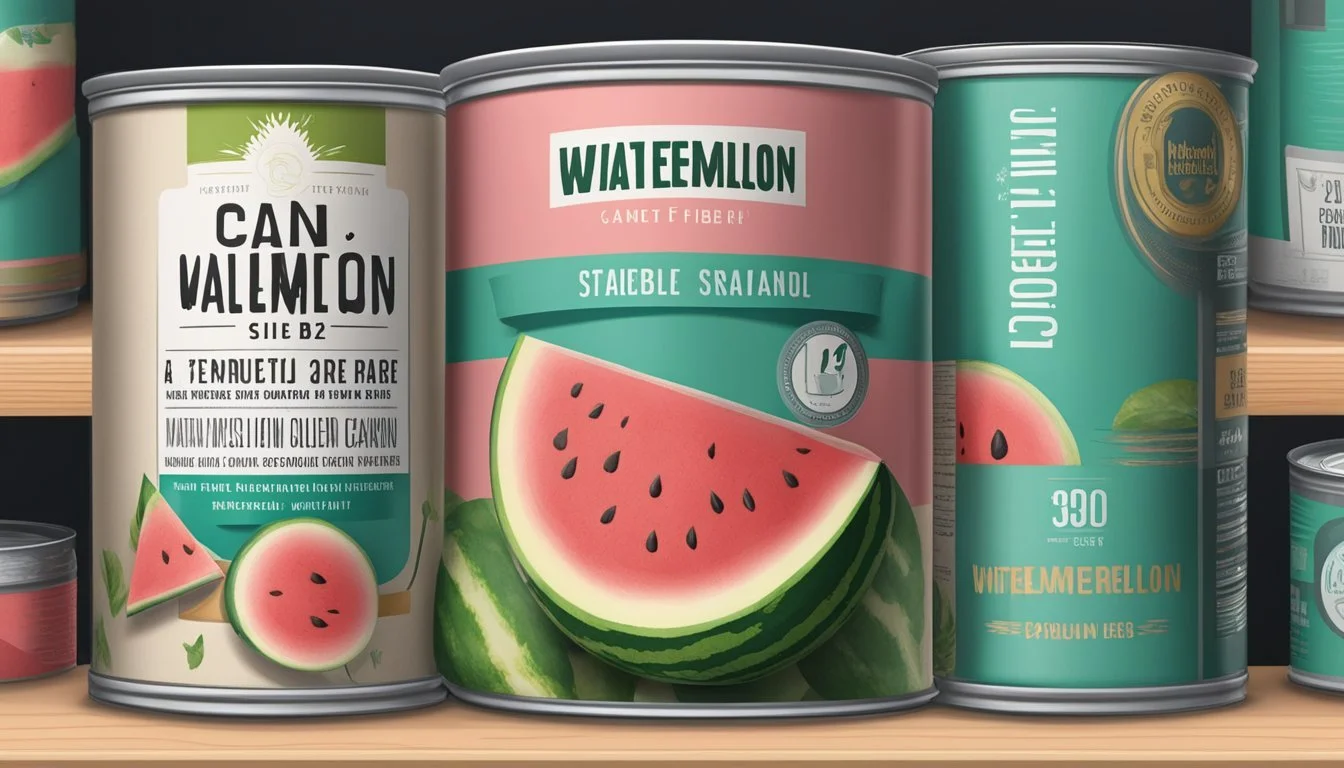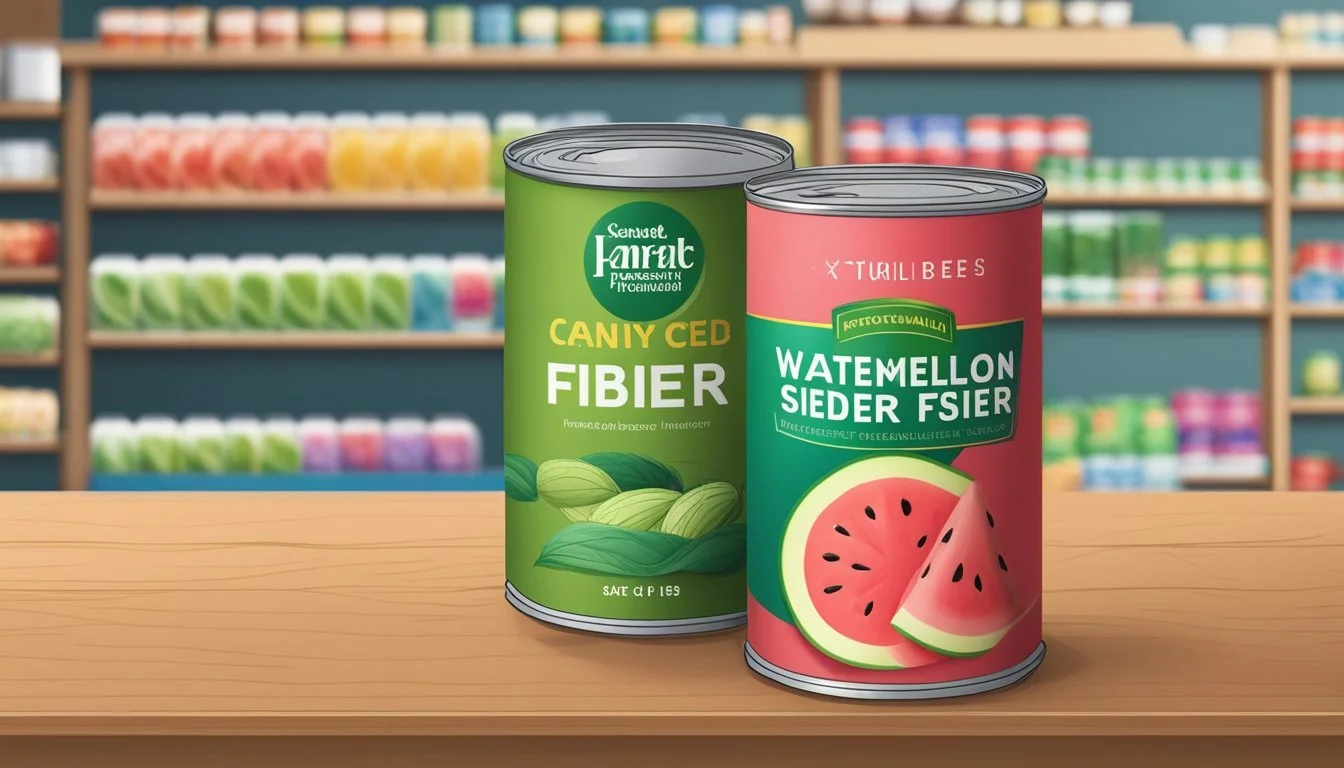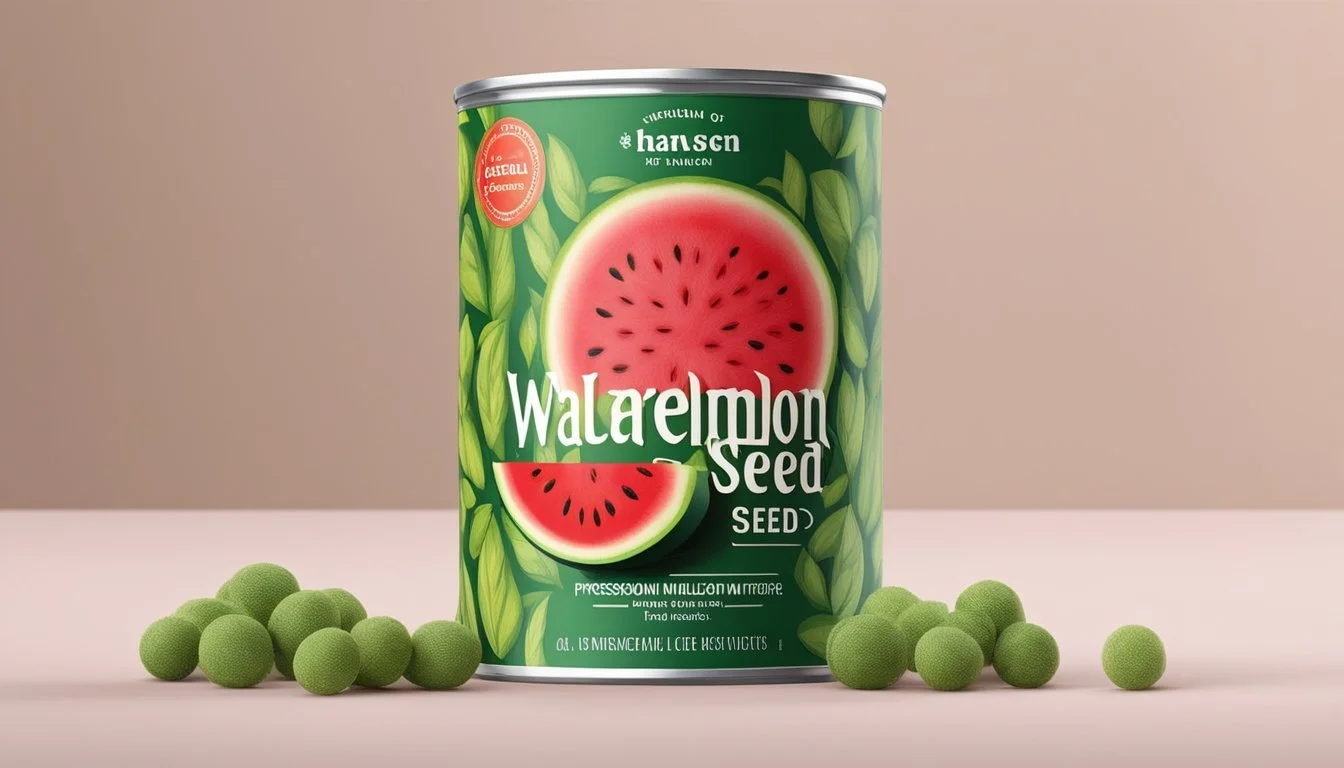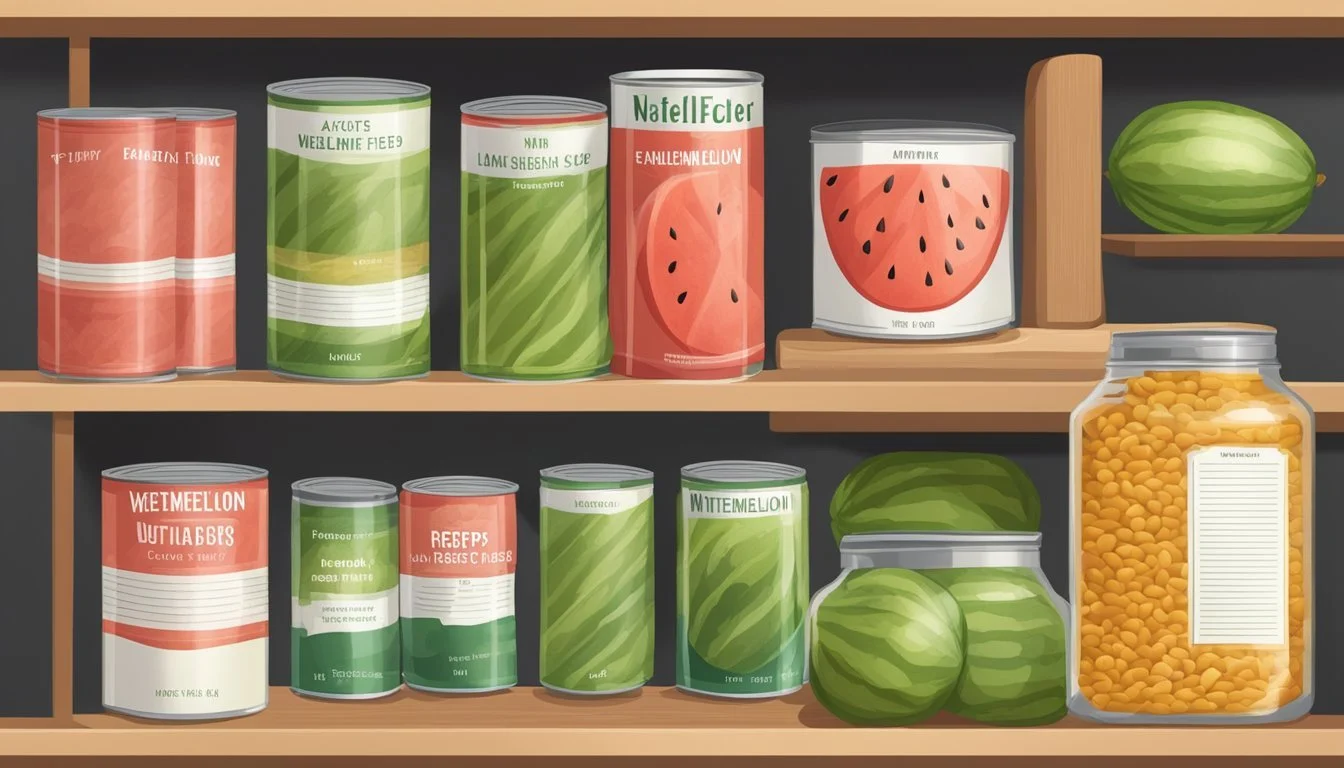How Long Does Canned Watermelon Seed Fiber Last?
Shelf Life & Storage Tips
Watermelon seeds are more than just a byproduct of summer's favorite fruit; they carry nutritional value, especially when they are preserved properly. When it comes to canned watermelon seed fiber, the shelf life is a key concern for consumers looking to maintain the freshness and nutritional benefits these seeds provide. The durability of the canned seeds' fiber is linked to the methods used in the canning process as well as the storage conditions post-canning.
Canned watermelon seed fiber, often utilized as a health supplement due to its high content of dietary fiber, can last quite a while when stored correctly. The fiber within the seeds does not degrade easily over time, especially when the seeds are kept in an airtight and sterile environment, such as a properly sealed can. The absence of moisture, light, and excess heat helps to extend the shelf life and preserves the quality of the seed fiber.
It is important to note that while the seed fiber itself remains stable, the overall quality and safety of canned watermelon seeds also depend on factors such as the integrity of the can and the absence of contaminants. When preserved under the right conditions, the fiber in canned watermelon seeds can outlast the typical pantry shelf life of many other canned goods, offering a long-lasting source of nutrition for those who incorporate it into their diet.
Understanding Watermelon Seed Fiber
Watermelon seed fiber is an integral component of the seeds, which contributes to the overall nutritional value of this snack. Rich in fiber, the seed composition supports digestive health and offers a range of other essential nutrients.
Nutritional Profile
Watermelon seeds are lauded for their high fiber content, which aids in digestion and promotes a feeling of fullness. Beyond fiber, the seeds are packed with protein, making them a nutritious option for muscle repair and growth. They also contain polyunsaturated fats, including omega-3 and omega-6 fatty acids, which are essential for heart health.
The nutritional benefits of watermelon seeds extend to their vitamin and mineral content. They are a significant source of magnesium, a mineral crucial for muscle and nerve function; potassium, which helps maintain proper electrolyte and fluid balance in the body; folate, essential for DNA synthesis and repair; and zinc, necessary for the immune system. Additionally, watermelon seeds have antioxidant properties due to the presence of various compounds that combat oxidative stress.
Varieties and Common Uses
There are multiple varieties of watermelon seeds, each with its use. The two primary types of seeds found in watermelons are white seeds, which are immature seeds that haven't developed fully, and the mature black or dark brown seeds. While all types of watermelon seeds offer nutritional advantages, the mature seeds are the ones traditionally roasted and consumed for their health benefits.
In terms of common uses, watermelon seeds can be eaten raw, sprouted, or roasted. Roasting is a preferred method as it enhances their nutty flavor and makes them a crunchy snack. They can also be pressed to extract oil or ground into a flour that can be incorporated into baking or smoothies for added fiber and nutrient content.
Canning Process and Storage
The preservation of watermelon seed fiber through canning hinges on meticulous technique and appropriate storage to ensure longevity and safety. This section outlines the canning steps, necessary equipment, and storage procedures critical to extending the shelf life of canned watermelon seed fiber.
Canning Techniques
Canning watermelon seed fiber requires following precise steps to ensure a safe and stable product. Two primary canning methods are used: the water bath and the pressure canner. The water bath method is suitable for high-acid foods and involves boiling jars in water to create an airtight seal. It typically isn't the method recommended for watermelon due to its low acidity. Conversely, a pressure canner allows higher temperatures and is necessary for low-acid foods like watermelon seed fiber, ensuring the destruction of bacteria that can cause spoilage and foodborne illness.
Equipment Needed
The right equipment is essential for successful canning. A basic list includes:
Pressure canner: For low-acid foods like watermelon seed fiber to ensure safety.
Canning jars: Glass jars with two-part lids consisting of a flat lid and a screw band.
Jar lifter: To safely handle hot jars.
Canning funnel: To transfer fiber into jars without spillage.
Non-metallic spatula: To remove air bubbles before sealing.
Clean towels: To wipe jar rims clean before sealing to ensure a proper seal.
Knowledge of one's equipment is just as important as the equipment itself.
Proper Storage Practices
Once properly canned, watermelon seed fiber should be stored in a cool, dark place. An ideal storage space will have a consistent temperature, typically between 50°F and 70°F (10°C and 21°C), which will maximize the shelf life and quality of the canned product. Stored properly, canned goods can maintain quality for up to a year, but are safe to consume as long as the seal remains intact.
Airtight containers: Ensure jars are sealed properly.
Refrigerated storage: Not necessary for properly canned and sealed jars, but required for any opened jars of watermelon seed fiber.
Jars should not be stored above room temperature or in direct sunlight, as these conditions can compromise the seal and food quality.
Regular inspection of jars is recommended to check for any signs of spoilage.
By adhering to these methods and storage practices, one can extend the shelf life and maintain the quality of canned watermelon seed fiber.
Factors Affecting Shelf Life
Canned watermelon seed fiber's durability is predominantly influenced by environmental conditions and the methodologies implemented for preservation.
Environmental Conditions
The shelf life of canned watermelon seed fiber is significantly affected by the storage environment. Cool and dry locations are imperative for prolonging viability. Prolonged exposure to heat and moisture can lead to degradation, whereas consistent temperatures help maintain quality. It’s also essential to prevent cans from getting wet which could cause rust and compromise the seal integrity.
Preservation Methods
Effective preservation methods play a crucial role in extending shelf life. Airtight containers and vacuum sealing are exemplary approaches as they minimize air exposure. When watermelon seed fiber is properly sealed, it remains protected from environmental factors that could accelerate spoilage. For consumers, keeping the product refrigerated after opening is recommended to maintain freshness.
Safety Considerations in Canned Foods
When exploring the longevity and safety of canned watermelon seed fiber, it is essential to recognize indicators of spoilage and implement strategies for preventing contamination to ensure food safety.
Identifying Spoilage
Canned foods, including those containing watermelon seed fiber, can spoil if the can is compromised or the food is improperly processed. Consumers should look for signs such as:
Bulging cans: This may indicate gas production from bacteria, which could include the deadly botulism toxin.
Leaks or rust: Compromised cans may allow entry of bacteria, resulting in spoilage.
Off odors or colors: Any marked change could signal that the food is unsafe for consumption.
Spurting liquid on opening: This is often a sign that the contents have been under pressure, possibly due to bacterial growth.
These symptoms of spoilage are clear warnings that the food poses health risks and should not be consumed.
Preventing Contamination
To preserve the quality of canned foods and prevent health hazards like foodborne illnesses:
Always inspect cans before purchase and do not buy if there is any sign of damage.
Store canned goods in a cool, dry place to reduce the risk of compromising the can integrity.
Ensure that home canning is performed with rigorous adherence to food safety guidelines, which includes using the proper sterilization technique and canning process.
Proper processing of canned watermelon seed fiber is critical to prevent the development of bacteria such as Clostridium botulinum, which can lead to severe illness.
Maximizing Flavor and Texture
Achieving the perfect blend of flavor and texture in canned watermelon seeds relies on starting with seeds from ripe watermelons and storing the canned goods properly post-canning.
Optimal Ripe Conditions for Canning
A ripe watermelon is the cornerstone of flavorful and textured seeds for canning. The seeds need to come from watermelons that exhibit a deep color and mature seeds, indicating optimal ripeness. The flesh of the fruit should be uniformly colored without any white streaks. For canning purposes, the ripeness of the watermelon contributes directly to the richness in taste and the firmness of the seeds within the final product. Canners should look for watermelons that resonate with a dull hollow sound when tapped, signaling the right degree of ripeness.
Maintaining Quality Post-Canning
Once the watermelon seeds are canned, maintaining the quality of their flavor and texture becomes a priority. Storage conditions can greatly sway the taste and texture of the preserved seeds. It is best to store the canned watermelon seeds in a cool, dark place to maintain their quality. The ideal storage temperature is between 50°F and 70°F with minimal exposure to light, as higher temperatures and light can degrade the flavor and texture over time. Using a syrup made from sugar and water during the canning process can help preserve the natural flavor and texture of the seeds. Spices such as cinnamon may also be added to the syrup to enhance taste.
Pairing and Recipes
In this section, one will discover optimal food pairings and innovative recipes that incorporate watermelon seed fiber, an ingredient revered for its health benefits and versatility.
Complementary Foods
Watermelon seed fiber has a neutral taste, which allows it to pair well with a variety of foods. It can be added to tomato-based dishes, as the robust flavor of tomatoes complements the subtle texture of the seeds. Apples and peaches also pair nicely with watermelon seed fiber, especially in smoothies or as a topping on salads, to add a pleasant crunch without overpowering the fruit’s natural flavor.
Innovative Recipes Using Watermelon Seed Fiber
Watermelon Seed Fiber Soup
Ingredients: Tomato base, watermelon seed fiber, fresh herbs
Instructions: Incorporate the watermelon seed fiber into a rich tomato soup to enhance the nutritional content and add an unexpected twist of texture.
Watermelon Seed Fiber Fruit Medley
Ingredients: Diced apples, sliced peaches, a sprinkle of watermelon seed fiber
Instructions: Mix watermelon seed fiber with fresh apples and peaches for a healthful and refreshing fruit salad that delivers layers of taste and nourishment.
How to Determine Shelf Life
Determining the shelf life of canned watermelon seed fiber involves several factors which can significantly influence its longevity. Storage conditions, in particular, play a crucial role. The shelf life of this product is contingent on maintaining an environment that is consistently cool, dry, and away from direct sunlight. A pantry or a kitchen cupboard typically provides an ideal setting.
Proper Storage: Canned goods should be stored at room temperature; however, once opened, the remaining watermelon seed fiber should be refrigerated in a sealed container to prevent spoilage.
Expiry Date: Consumers should always check the expiration date on the can as a primary reference point. This date gives an indication of how long the watermelon seed fiber will maintain its quality and safety for consumption.
Visual Inspection: Cans that are free from dents, swelling, or rust are more likely to preserve their contents effectively. Any sign of damage could indicate compromised integrity of the can, potentially affecting the shelf life.
Auditory Signals: When opening the can, a lack of the customary 'pop' sound might suggest a loss in vacuum seal, which can affect freshness.
Texture and Color: The physical appearance of the watermelon seed fiber can offer cues. It should retain its original size and shape. If fibers appear shrunken or excessively brown, this could indicate degradation.
Odor: Any off-putting smells upon opening the can are immediate indicators that the watermelon seed fiber is no longer suitable for consumption.
Factor What to Check Storage Cool, dry area away from sunlight Expiration Expiry date labeled on the can Can Condition No dents, swelling, or rust Opening Sound Audible 'pop' when opened Appearance Consistency in size, shape, and color Smell No unpleasant odors
By diligently monitoring these elements, individuals can make informed decisions regarding the shelf life and usability of canned watermelon seed fiber.
Life Beyond Food
When considering the full potential of canned watermelon seed fiber, one recognizes not only its nutritious value as a food product but also its versatile applications beyond consumption. Watermelon, as a beloved summer fruit, has parts like the rind that often go unused in the canning process.
Alternative Uses
The fibrous content of watermelon rind is not limited to the kitchen. After canning, the rind can be repurposed in a variety of ways. It can be pickled as a tangy snack, or even used as an ingredient in homemade skincare remedies due to its gentle exfoliating properties. Moreover, canned watermelon rind is rich in citrulline, an amino acid that can benefit heart health and blood circulation.
Garden and Agricultural Benefits
Watermelon seeds from the canning process hold potential for home gardening and agriculture. These seeds can be sown directly into sandy soil, which is ideal for watermelon cultivation due to its well-draining properties. A consistent schedule of watering can support proper seed germination. Plants grown from these seeds may yield fresh watermelons, with the entire fruit—flesh, seeds, and rind—being utilized in various ways, showcasing a sustainable loop from canning to cultivation.










